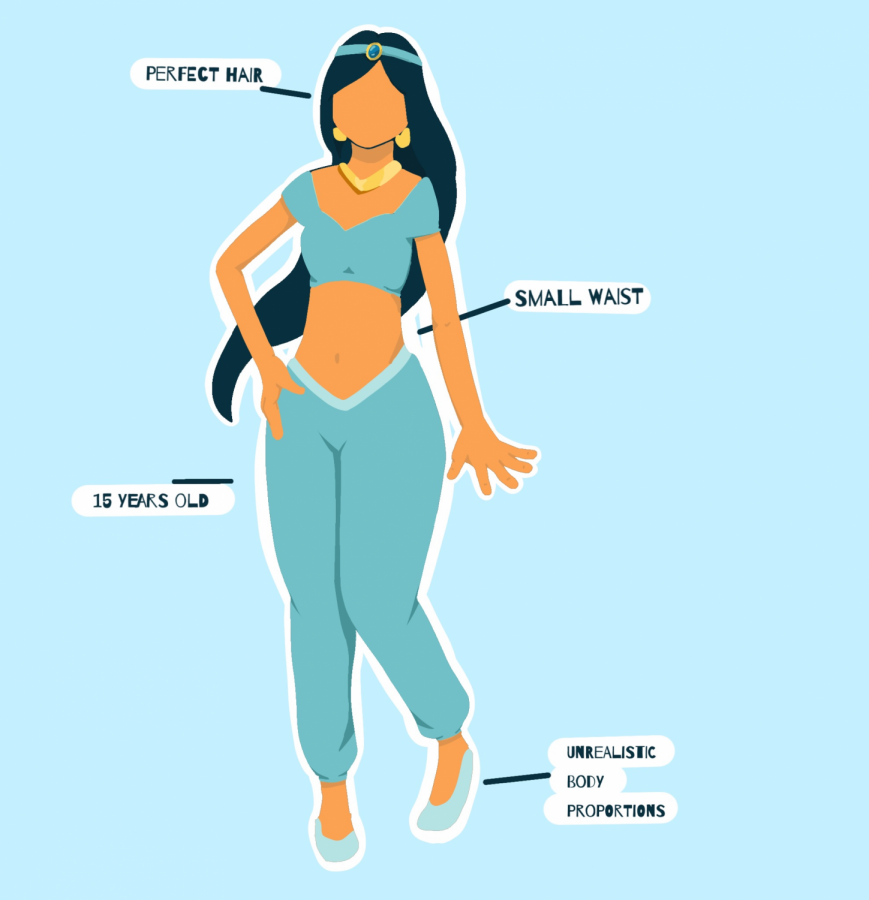When it Comes to Gender Stereotypes, Disney Really Needs To Let It Go.
November 9, 2021
Scarlett Johansson, who portrays Natasha Romanoff in many Marvel movies, recently sued Disney, alleging that her contract was breached.
The movie Black Widow, which stars Johansson, was released in theaters and on Disney+ simultaneously despite her contract stating that the film would be released exclusively in theaters.
In response to these allegations, Disney released a statement that explained that Johansson had been paid $20 million and that they had not breached her contract, stating that her complaint is “sad and distressing in its callous disregard for the horrific and prolonged global effects of the COVID-19 pandemic.”
Johansson received support from women’s groups such as Women in Film, Re-Frame and Times Up, who called out Disney for its “gendered character attack” by attempting to portray Johansson as “insensitive or selfish for defending her contractual business rights.”
Recent reports state that Johansson has settled her lawsuit, though the terms of the agreement have not been disclosed to the public.
Disney history of sexism and gender stereotyping traces all the way back to their early movies. As these movies are often watched by many young children, their sexist themes can be incredibly detrimental to girls’ world view.
There are major issues with the portrayal of Disney princesses, both in their personalities and physical features. The princesses represent unrealistic beauty standards. Many have tiny waists, unnaturally large eyes and perfect hair and makeup at all times. With young girls as the target audience for Disney princess movies, these standards are sure to cause grave harm to their mental health.
The National Association of Anorexia Nervosa and Associated Disorders website contains incredibly worrying statistics about eating disorders in children. The group found that more than 40 percent of girls in grades one through three “want to be thinner.” In addition, the report states that more than 80 percent of 10-year-old children “are afraid of being fat,” and that 46 percent of children ages 9 to 11 report that they diet “sometimes” or “very often.” The stereotype that women need to be skinny in order to be considered beautiful is perpetuated by the portrayal of female characters in Disney.
This veiled sexism is seen in small details like a film’s dialogue, with many Disney princesses having far less speaking time than their male counterparts. Even in their own movies, women speak less, with men having three times as many lines. For example, in Mulan, Mushu, Mulan’s protector dragon, has 50 percent more dialogue than Mulan does. With Mulan acting as just one example of this detrimental phenomenon within Disney culture, there is cause to scrutinize and question the messages these films might be communicating about the roles and voices of women in society today.
Weaved into this male-dominated dialogue is provocative content that provides unhealthy ideas about relationships to young girls. While Beauty and the Beast is a fairly feminist movie, featuring an intelligent female lead (Belle) who repeatedly rejects marriage proposals from one of the men in town, some parts of the movie have not aged well. Belle falls in love with the Beast, who displays violent behaviors, including yelling and threats to lock her in a cell. Belle’s emotional response is aligned with signs of Stockholm Syndrome, a condition characterized by feelings of trust or affection by a victim toward their captor. In this way, the film promotes questionable messages about power imbalances in romantic relationships.
Other movies, like The Little Mermaid, only further perpetuate the notion that women should surrender their agency — and identity — in the pursuit of love. Ariel makes the decision to forsake her tail for legs, her life under the sea for a life on land, and her family for Prince Eric, a man with whom she has never spoken.
In the popular films Snow White and Sleeping Beauty, non-consensual kissing occurs between the prince and princess. In the plot of both stories, Snow White and Aurora are placed under sleeping curses that renders them immobile and unable to give active consent. The only antidote: a princes’ “true love’s kiss.” These situations tell children that consent is not required and in turn, emphasizes misogynistic values in romantic relationships.
The age differences between some of Disney’s most prominent love interests are also problematic. These disturbing disparities are seen most drastically in the marriage between Snow White (14) and Prince Florian (31), who are 17 years apart in age. Is this something that young girls should be seeing — and normalized in a film created for children? There is clearly a power imbalance in Snow White’s marriage, which does not send a positive message to young girls about healthy relationships.
Gender stereotypes towards men are also prominent. The princes in early Disney movies are not complex characters. Most of them, with few exceptions, are wealthy, stoic and unsympathetic. Sometimes, their only real purpose in the film is to rescue the princess and then marry her, like in Snow White and Sleeping Beauty.
Despite the sexism in old Disney movies, attempts have been made to salvage Disney’s reputation with more progressive movies in which women are portrayed as powerful, independent and intelligent characters.
Tiana from The Princess and the Frog is hardworking, eventually achieving her dream of opening up her own restaurant. In Moana, the title character sacrifices the comfort of her home to go on an adventure to save the lives of her people, something many were afraid to do. Merida from Brave fights back against her parents, who attempt to force her into an arranged marriage, displaying determination, courage and independence throughout the movie.
Many recent Disney films have also redefined the traditional meaning of “true love,” which previously depicted by commanding the attention of a man. In Frozen, when Anna turns into ice because of a frozen heart, it is love from her sister, not a man that thaws her. In Maleficent, a 2014 retelling of Sleeping Beauty, the title character develops a motherly affection for Aurora, ultimately breaking the curse with a single kiss on the forehead.
Gender inequality is something that is present in many aspects of daily life, and it is most prominently emphasized in the media. While Disney has been making progress toward dismantling gender stereotypes and misogynistic messages with their content, there is still much more work to be done.












